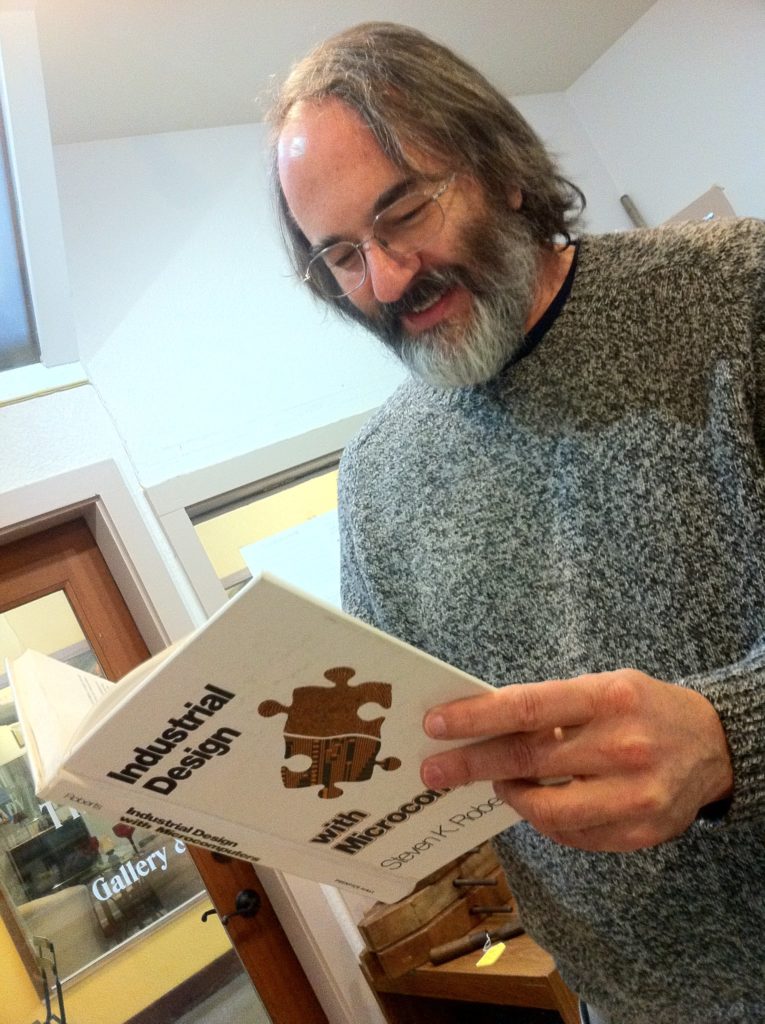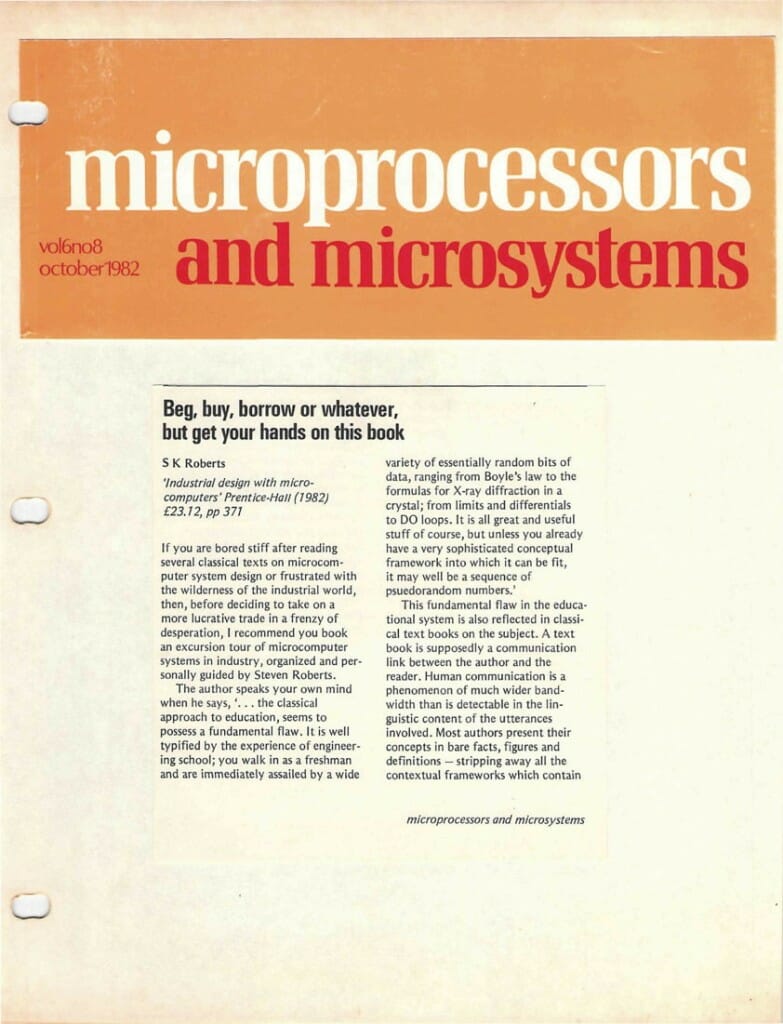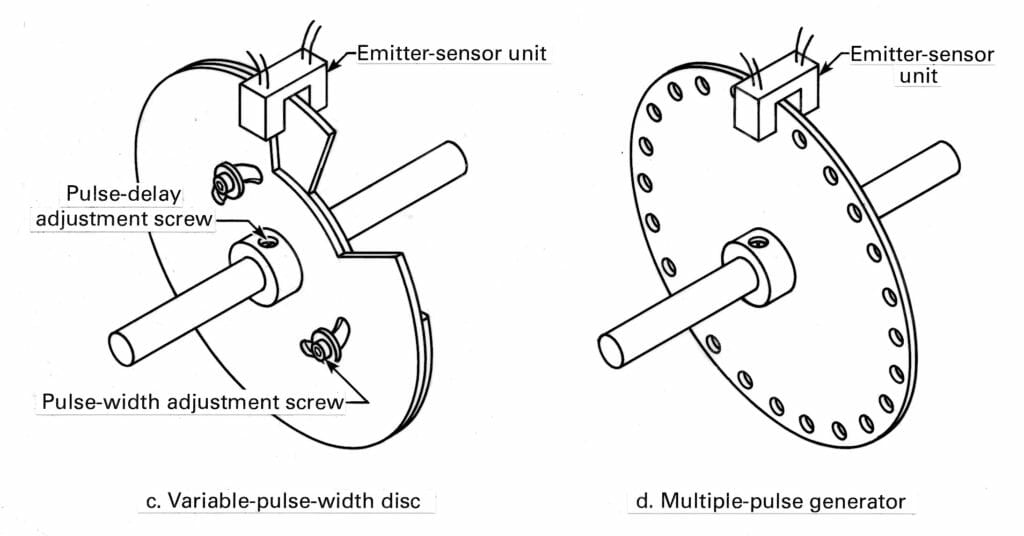
Industrial Design with Microcomputers – book review
My most ambitious book project of the pre-biking years was a textbook on industrial microprocessor engineering, published by Prentice-Hall… first as a hardcover (Industrial Design with Microcomputers) and then as a softcover edition (Creative Design with Microcomputers). It enjoyed a sort of cult-like status in some circles, as it was by no means a normal textbook… the theme was my most-quoted line:
Art without engineering is dreaming;
Engineering without art is calculating.
This was one of the more effusive reviews, and the writer clearly enjoyed the departure from normal “academic third-person boring” that characterized many of the books of the epoch. Alas, this did not translate into huge sales, but the book continued to be a door-opener for many years. The photo above was taken by Ben Willmore in May 2011, during his visit to my lab facilities in La Conner, Washington.
Beg, buy, borrow or whatever,
but get your hands on this book
Reviewed by D. M. Vaidya
Westfield College, UK
October, 1982
S K Roberts
‘Industrial design with microcomputers‘ Prentice-Hall (1982)
£23.12, pp 371
If you are bored stiff after reading several classical texts on microcomputer system design or frustrated with the wilderness of the industrial world, then, before deciding to take on a more lucrative trade in a frenzy of desperation, I recommend you book an excursion tour of microcomputer systems in industry, organized and personally guided by Steven Roberts.
The author speaks your own mind when he says, ‘…the classical approach to education seems to possess a fundamental flaw. It is well typified by the experience of engineering school; you walk in as a freshman and are immediately assailed by a wide variety of essentially random bits of data, ranging from Boyle’s law to the formulas for X-ray diffraction in a crystal; from limits and differentials to DO loops. It is all great and useful stuff of course, but unless you already have a very sophisticated conceptual framework into which it can be fit, it may well be a sequence of psuedorandom numbers.’
This fundamental flaw in the educational system is also reflected in classical text books on the subject. A text book is supposedly a communication link between the author and the reader. Human communication is a phenomenon of much wider bandwidth than is detectable in the linguistic content of the utterances involved. Most authors present their concepts in bare facts, figures and definitions — stripping away all the contextual frameworks which contain that material. This is the basic reason why so many textbooks are so unsuccessful.
But this book is different. The author deviates from all the conventional norms and fashions of book writing. He integrates the whole field of microcomputer-based design into a cohesive whole. With particular reference to the industrial requirements, this book’s 371 pages are packed with a wealth of applications-oriented information from the author’s own experience. You will not find even a single page of reproduced manufacturers data sheets or rehashed instruction sets of popular micros, or even nostalgic Boolean equations. The author assumes his readers have already consumed enough of basic electronics and digital logic circuitry.
Learning is a complex but active process entailing great effort on the teacher’s and writer’s part. At the higher levels of the learning process hierarchy lies associative learning, which results from associative linkages in the neural network of brain being activated upon motivation. The author’s cybernetic thinking capitalizes on this. He builds on your intuitive ideas, emphasizing the ones which are not so obvious and developing the conceptual framework en route. He makes you laugh when he says, ‘If at some point, some background knowledge is required, outside the domain of this book, I’ll throw in references that will let you make a subroutine call without crashing your stack.’ But, underneath lies his skill and effort to arouse your curiosity and motivate you to know more about stack operations and subroutine handling. His humorous sugar-coatings on bitter pills of ‘environment assault’, ‘performance latitude’, ‘human perversity’, ‘sexy custom jobs’ (and similar) make them palatable.
Look at the way he opens his discourse. Instead of starting ab initio with segmented topics in binary arithmetic, logic gates and Boolean algebra, or exposing the bare legs of chérie microprocessorie and leaving you wondering how she could dance, the author shows you a working system in action. He discusses the purpose of ‘Blanchard’ (typical of machine tools), identifies the tasks it has to perform (quietly introducing the closed-loop feedback concept), develops a control algorithm, discusses interfacing problems and finally points you to a small box bolted to the surface that controls this machine. All this works as a catalyst and makes you eager to know what is inside and at the same time helps to elevate you to the appropriate conceptual level.
The author then covers the usual hardware-software, systems and integration, communications, interfacing and applications and a lot more, but in his own style with a unique flavour. These topics are covered in 15 chapters organized in three parts and enriched with fine illustrations. Although the coverage is gigantic, the subject matter is treated within a well-specified field of interest. The discreet boundaries between individual chapters are only arbitrary (to help you break away for a cup of coffee or attend to an urgent call of nature). Before you finish one chapter, you get curious about what is next on the menu.
I read this book from cover to cover without unbalancing the milieu internale and significantly added to my knowledge base. So why does this book succeed in attaining the desired goals while so many fail at some point or other? The author almost wins the race before starting when he says in his preface, ‘… as important as the specific subjects discussed, is the attitude of respect for the reader’s creativity and awareness that permeates the entire book’. You are bound to feel at home when you share his observation that ‘the ideal text book world of zero rise time pulses, noise free circuits and lumped constants is not exactly what exists out there’.
The book is unique both in style and approach. The coverage is casual, humourous, friendly and open minded. It helps diminish the gap between perception and cognition. I can recommend this book cum laude to mature students and practising engineers. It will also provide a case study for researchers in associative learning processes and I feel it is a must for teachers and writers of text books in engineering. Let the price tag of £23 not deter you from using it. Beg, buy, borrow or whatever but get your hands on this book; it’s well worth the effort. On reading the book, you will be amused, entertained, enlightened, armed, equipped and ready to take a deep plunge into the depths of industrial microcomputer design. The book, in every linguistic sense, is a concession to reality.
D M Vaidya
Westfield College, UK
vol 6 no 8 October 1982
p439





You must be logged in to post a comment.